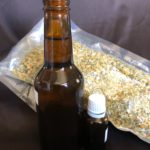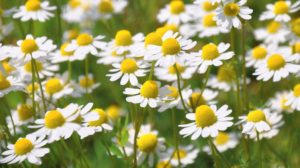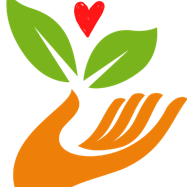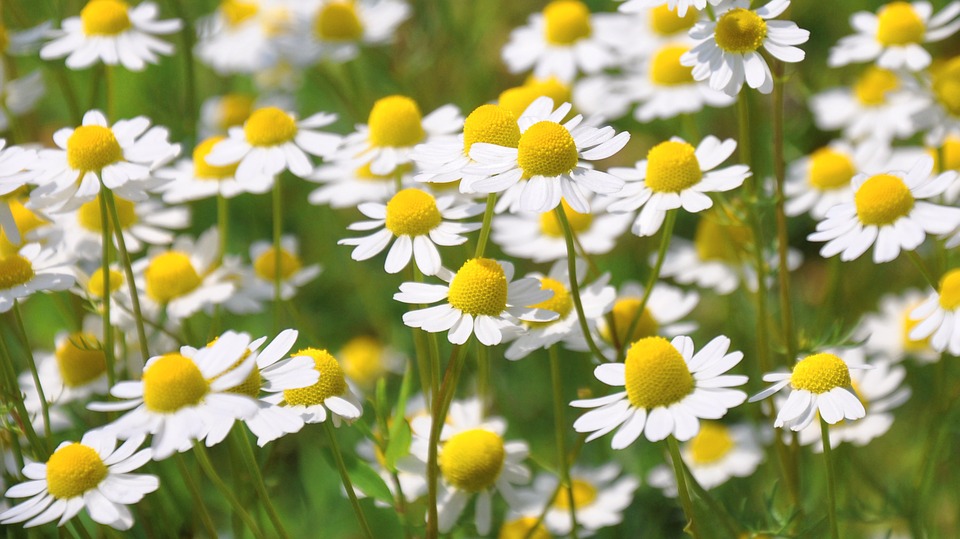While you are very likely familiar with it as a tea, you may not realize the herb chamomile is also useful as a bath, cream, essential oil, gargle, inhalation, poultice and tincture
In addition to having a sedative effect, chamomile possesses antibacterial, antifungal, anti-inflammatory, antioxidant, antispasmodic, antiulcer and antiviral properties
Although most of the evidence is anecdotal, chamomile has been shown to ease gastrointestinal complaints, reduce menstrual cramps, relieve cold symptoms, soothe skin irritations and treat eye and mouth inflammation 
Daily consumption of chamomile tea has been associated with a decreased risk of benign thyroid diseases and thyroid cancer
By Dr. Mercola
Herbal teas can be a rich source of beneficial compounds like polyphenols and flavonoids, which have antioxidant and anti-inflammatory properties. One of the most soothing of all herbal teas — with a long history of beneficial use dating back to ancient Egypt — is chamomile. Chamomile is the common name for several daisy-like plants belonging to the Asteraceae family, namely German chamomile (Matricaria retutica) and Roman or English chamomile (Chamaemelum nobile).
While you are very likely familiar with the tea, you may not realize chamomile is also useful as a bath, cream, essential oil, gargle, inhalation, poultice and tincture. In addition to having a sedative effect, as well as antioxidant and anti-inflammatory compounds, chamomile also possesses antibacterial, antifungal, antispasmodic, antiulcer and antiviral properties.
Consumption of chamomile tea has even been shown to protect you from benign thyroid diseases and thyroid cancer. Without a doubt, chamomile is one herb you shouldn’t overlook.
History of Chamomile 
Chamomile’s history1 begins in ancient Egypt, where it was first mentioned as a cure for fever. The Egyptians also used chamomile as a cosmetic, as well as an embalming oil for preserving dead pharaohs. The Romans used chamomile in incense, as a medicinal herb and as a flavoring for drinks.
In Spain, chamomile flowers are known as “manzanilla,” meaning “little apple,” and the herb has long been used to flavor a light sherry of the same name. During medieval times, chamomile petals were strewn about on the ground during gatherings to create pleasant odors.
Seven Health Benefits of Chamomile
In addition to its pleasant taste as a tea and ready accessibility, chamomile has been praised for millennia for its many health benefits. The presence of numerous antioxidants contributes to chamomile’s many positive effects on your body. Among its many health benefits, chamomile:2,3,4
Acts as a mild sedative and sleep inducer — Chamomile has long been used to treat insomnia and is highly regarded for its ability to induce daytime calmness and relaxation. Its sedative effects are likely due to the flavonoid apigenin, which binds to benzodiazepine receptors in your brain.
While there is an absence of clinical trials to validate the effects of chamomile on sleep, 10 cardiac patients who drank chamomile tea were reported to have quickly fallen into a deep sleep lasting 90 minutes.5 Authors of a study involving the effects of chamomile extracts on sleep-disturbed rats concluded chamomile extracts exhibit “benzodiazepine-like hypnotic activity.”6
Addresses cold symptoms and sinus pain and pressure — Anecdotal studies suggest chamomile can be effective as a natural cold remedy, especially for cold symptoms such as sinus congestion, pain and pressure. Check out the video above for a demonstration on how to use dried chamomile flowers as an herbal steam to clear your sinuses and lungs.
Calms gum inflammation, mouth sores and tooth abscesses — Chamomile has been shown to be effective in the treatment of gum inflammation, mouth sores and ulcers and tooth abscesses. Some suggest placing a wet chamomile teabag alongside an inflamed tooth may provide pain relief until you are able to be seen by your dentist.
Reduces menstrual cramps and pain — Multiple studies have validated chamomile tea to help reduce the severity of menstrual cramps. A 2010 study7 published in the Iranian Journal of Obstetrics, Gynecology and Infertility indicated that consuming chamomile tea for a month appears to reduce menstrual pain and cramps, as well as the anxiety and distress that often accompanies it.
The study authors said: “[C]hamomile tea [is] an effective therapy in relieving the pain originated from primary dysmenorrhea and its consequent psycho-social problems.”
Relieves gastrointestinal complaints and bowel problems — Though most of the evidence is anecdotal, chamomile is believed to help reduce smooth muscle spasms associated with gastrointestinal inflammatory disorders such as Crohn’s disease, diverticular disease, gastritis, irritable bowel problems and ulcerative colitis.
Chamomile is particularly helpful in dispelling gas, soothing heartburn and relaxing muscles that move food through your intestines. It also inhibits Helicobacter pylori, a bacterium linked to stomach ulcers.
Soothes burns and other skin irritations — Although somewhat less effective than hydrocortisone cream, chamomile has been shown to be effective in relieving minor burns and sunburn, as well as soothing skin conditions such as chickenpox, diaper rash, eczema and psoriasis.
Treats eye infections and inflammation — Due to its calming and soothing properties, chamomile has been shown to reduce eye irritation and redness.8 Add two chamomile teabags to 3 cups of boiling water. Allow to steep until the tea has cooled, then discard the teabags. Dip a clean washcloth into the cooled tea and apply to your eye as a compress for 15 minutes, three to four times a day.
Increases NAD+ — Chamomile is relatively high in a flavone called apigenin which just happens to inhibit CD38 that is one of the largest consumers of NAD+. If you inhibit CD38 and reduce NAD+ consumption you will increase NAD+ levels. Because of this benefit i drink a cup of chamomile tea every night.
Volatile Oils Are the Basis for Chamomile’s Many Health Benefits
The many health benefits of chamomile are linked to the volatile oils found in its flowers, which include bisabolol, bisabolol oxides A and B and matricin, as well as other bioactive ingredients, such as:9
Chamazulene or azulenesse
Coumarins like herniarin and umbelliferone
Farnese and spiro-ether sesquiterpene lactones
Flavonoids such as apigenin, luteolin, patuletin and quercetin
Glycosides
Hydroxycoumarins
Mucilage
Terpenoids
About the extensive medicinal benefits of chamomile, authors of a 2010 study published in Molecular Medicine Reports said:10
“Chamomile preparations are commonly used for many human ailments such as hay fever, inflammation, muscle spasms, menstrual disorders, insomnia, ulcers, wounds, gastrointestinal disorders, rheumatic pain and hemorrhoids. Essential oils of chamomile are used extensively in cosmetics and aromatherapy. Many different preparations of chamomile have been developed, the most popular of which is in the form of herbal tea consumed more than 1 million cups per day.
Chamomile has been used as an herbal medication since ancient times, is still popular today and probably will continue to be used in the future because it contains various bioactive phytochemicals that could provide therapeutic effects. Chamomile can help in improving cardiovascular conditions, stimulate [the] immune system and provide some protection against cancer.”
Chamomile Shown to Reduce Your Risk of Thyroid Cancer
A 2015 study11 published in the European Journal of Public Health linked the consumption of chamomile tea to a lower risk of benign thyroid diseases and thyroid cancer. In fact, the more tea consumed, the lower the cancer risk. Specifically, those who drank chamomile tea two to six times a week had a 70-percent lower risk of developing thyroid abnormalities, while those who drank the tea regularly for 30 years achieved an 80 percent lower risk. According to the study authors:
“Although in the last decade several studies have addressed the protective role of black and green tea on several diseases, including cancer, there are only few, and controversial, studies on the effect of tea on benign and malignant thyroid diseases … Our findings suggest, for the first time, that drinking herbal teas, especially chamomile, protects from thyroid cancer, as well as other benign thyroid diseases.”
Chamomile’s anticancer effects very likely result from naturally occurring flavonoids such as apigenin. Found not only in chamomile, but also in celery and parsley, as well as other vegetables, fruits and herbs, apigenin has been shown to slow cancer growth and shrink cancerous tumors in animal studies. A 2012 study12 in which mice implanted with the cells of a fast-growing human breast cancer were treated with apigenin, cancer growth slowed and tumors shrank.
While more research is needed, authors of a 2017 study13 published in Cell & Bioscience indicated: “All evidence gathered thus far clearly indicates that apigenin has strong anticancer activities against various human cancers alone, and in combination with other chemotherapeutic agents.”
The Best Ways to Use Chamomile
If you’ve long known about chamomile tea but never considered using this versatile herb for anything else, you may be interested to know of its other uses for adults, which include:14
Bath — Add 1/4 pound of dried flowers or 5 to 10 drops of essential oil to bathwater to soothe cuts, eczema, hemorrhoids or insect bites
Capsules — Consume 300 to 400 milligrams three times per day, as directed by your physician
Cream — Apply cream containing 3 to 10 percent chamomile to treat dry, flaky skin, as well as eczema and psoriasis
Gargle or mouthwash — Gargle with cooled chamomile tea as often as desired or make a mouthwash by adding 10 to 15 drops of German chamomile liquid extract to about 3 ounces of warm water, and use up to three times a day
Inhalation — Calm a cough by adding a few drops of chamomile essential oil to a pot of hot water and breathe in the steam
Poultice — Mix powdered chamomile with water to make a paste and then apply it to inflamed skin
Tea — Pour 1 cup of boiling water over 2 to 3 heaping teaspoons of dried chamomile, steep as long as desired and drink between meals
Tincture — Take 1 teaspoon up to three times daily to calm frayed nerves, ease menstrual cramps, improve sleep and relieve headaches.
Chamomile Tincture Recipe
The video above, posted by Homesteadonomics, explains how to make a chamomile tincture at home, as well as some popular uses for it. Making a tincture is a great way to preserve chamomile because the potency of its volatile oils is more effectively retained through preservation.
Ingredients:
1 cup of dried chamomile flowers
Approximately 1 cup of boiling water
Approximately 1 1/2 to 1 3/4 cups of 80-proof vodka
Quart-sized glass jar with airtight lid
Procedure:
Place dried chamomile flowers in a clean quart-sized glass jar
Pour boiling water over the flowers until they are covered; stir as needed to ensure flowers are saturated
Add vodka to fill the jar, then cover tightly with lid and shake well
Store in a cool, dark place and shake daily for four to six weeks
After four to six weeks, pour liquid through a strainer and discard flowers
Store tincture in a clean glass jar
In terms of the vodka used, choosing a USDA certified, organic alcohol is best to ensure it is free of GMOs and pesticides. The recommended dosing for chamomile tincture is as follows:15
Adults — 1 teaspoon three times a day, as needed, to induce relaxation and promote restful sleep
Infants — Rub a small drop on gums during teething or on the stomach to relieve colic pain and calm a restless child
Toddlers and older children — 1/2 teaspoon up to three times a day, when needed, to induce sleep
Giving babies and young children who are having trouble sleeping a dose of chamomile tincture immediately prior to bedtime may help relax and prepare them for a restful night’s sleep.
Cautions About Chamomile
While chamomile is generally well tolerated, you should avoid it if you have an allergy to ragweed or any other member of the daisy family of plants such as chrysanthemum or marigold. Avoid chamomile if you are pregnant, or if you are taking anticoagulants or sedative medications.16Prior to using chamomile essential oil, do a skin test on your arm before applying it to your whole body. As with most other essential oils, it is best to use chamomile with a carrier oil such as coconut oil or olive oil.





